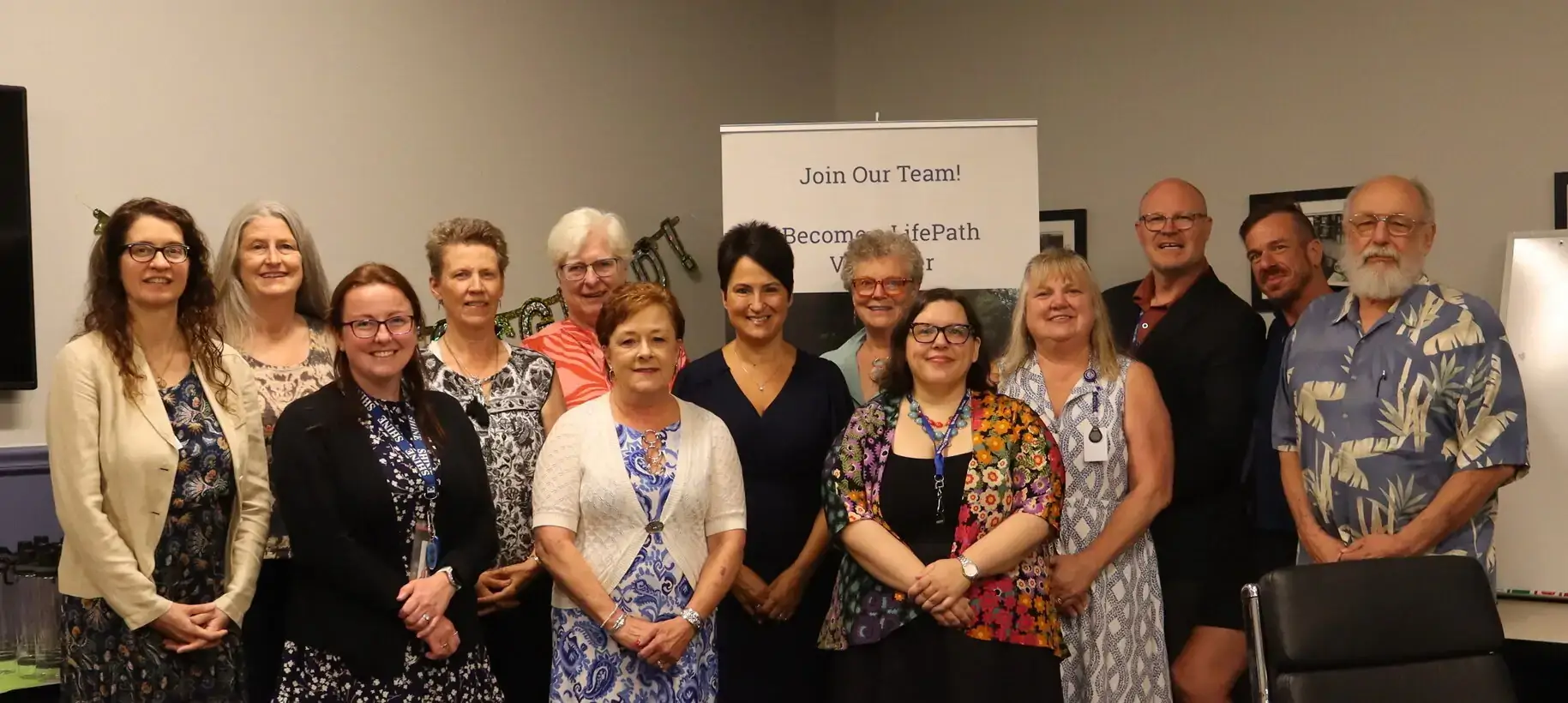Falls are the leading cause of hospital-related injury for adults over 65 years old in Massachusetts. While common, falls are not a normal part of aging and are frequently preventable. Using evidence-based strategies can help to make fall risk prevention a priority and decrease the odds of a potentially life-altering fall.
Falls Prevention Awareness week is September 22-26 this year. In an effort to raise awareness, LifePath will once again be participating in the 7th Annual Step Challenge organized by the Executive Office of Aging and Independence. All are welcome to join us in counting steps throughout the month of September in the name of falls prevention. If you do not have a step counter, you can count each mile as 2,500 steps. The statewide goal is 75 million steps! You can log your steps here.
Why is fall prevention a priority?
- A fall can significantly impact an older adult’s quality of life, and can lead to a decline in mobility, cognition, and mood.
- Having a history of a fall can double your risk of falling again.
- 1 in 4 older adults falls every year in the U.S.
- Each year about $50 billion is spent on medical costs related to non-fatal fall injuries.
- 1 in 5 falls among older adults causes serious injury such as a broken bone.
- More than 95% of hip fractures are caused by falling.
What puts someone at risk for falling?
- Environmental factors such as poor lighting, throw rugs, cluttered spaces, and unmet assistive equipment needs (i.e. grab bars, shower chairs).
- Certain chronic conditions and medications: Chronic diseases like diabetes and arthritis, and the medications that treat such diseases, can increase the risk of falls due to neuropathy, pain, and other complications that affect walking and balance.
- Poor vision: Adults with vision impairment are at almost double the risk of falling as those without vision concerns.
- Lack of physical activity: A sedentary lifestyle can lead to muscle weakness and bone loss. Weight-bearing exercise stimulates bone building, which increases bone density.
- Low bone density/osteoporosis: Bone density diminishes as you age, making bones weaker and more susceptible to fracture. Common osteoporosis-related breaks occur in the hips, wrists, and spine.
- Drinking alcohol and/or smoking cigarettes: Alcohol can increase your risk of bleeding and may also impair your balance and judgment, leading to an increased chance of falling. Smoking reduces the blood supply to your bones and impairs production of bone-building cells.
- Being a female over age 50, or a man over age 70: Osteoporosis is four times more likely to develop in women than men. Women lose up to 25% of their bone mass as their estrogen levels drop during menopause. Men begin losing testosterone around age 70, which also leads to a loss of bone mass. After age 50, 1 in 2 women and 1 in 4 men will have a fracture related to osteoporosis.
What can I do to keep my bones strong?
- Talk to your healthcare provider about a bone mineral density test. This test is an xray that measures the amount of bone in specific areas of the body and can help determine risk for bone fractures. This is especially important for women over 50, who are at much higher risk of osteoporosis.
- Eat foods rich in Vitamin D and calcium. Examples of this include milk, cheese, yogurt, canned sardines, eggs, and salmon. Consider talking to your doctor about getting a blood test to check your vitamin D and calcium levels. Some people may need vitamin D supplements depending on several factors including sun exposure.
- Regular weight-bearing and balance exercises help to build bones and keep them strong. High impact weight-bearing activities may include dancing, resistance training, and hiking. Low weight-bearing exercises can also be helpful for those with safety and/or mobility limitations and include walking, using a stair machine, or doing low-impact aerobics.
- Avoid tobacco use and avoid or limit alcohol consumption. Smoking reduces the blood supply to your bones and impairs production of bone-building cells.
- Take prescribed medications as directed by a healthcare professional. Always make sure your healthcare providers have an up-to-date medication list, including any vitamins and supplements, to prevent medication interactions.
Where can I get more information and resources?
The National Council on Aging’s Falls Free CheckUp is a tool that can be used to calculate fall risk based on a 13-question questionnaire. Links to resources are made available to those who may benefit from them. If you have trouble navigating the internet, many senior centers offer technical assistance. Call your local senior center for more information. If you choose to, you can share your results with your primary healthcare provider at your next appointment. Your results can serve as a useful source of information for your primary health care provider to consider when directing and planning your care to meet your long-term goals.
The American Bone Health Fracture Risk Calculator is a tool offered by the Bone Health and Osteoporosis Foundation that calculates your risk for fracture based on the answers to an 18 question questionnaire. This tool is designed for those over 45. An alternate quiz is also available on this site for those under 45 years old. You will need to enter your name, email, and zip code to view results.
The CDC Fall Prevention Checklist for Older Adults is a printable brochure that is organized by category and has check boxes next to common household hazards. Categories include: stairs and steps, floors, bedrooms, bathrooms, and kitchens. Checklist items under the category headings ask questions like “When you walk through a room, do you have to walk around furniture?” and offers suggestions such as “Ask someone to move the furniture so your path is clear.” This is an excellent tool for older adults and their families who want to identify and eliminate preventable environmental hazards that can lead to falls.
I hope this information helps you to prevent falls. Remember to log your steps for the month of September!
Sources:
https://www.ncoa.org/article/get-the-facts-on-osteoporosis-falls-and-broken-bones/
https://www.mass.gov/info-details/fall-prevention-information-for-older-adults-and-caregivers





